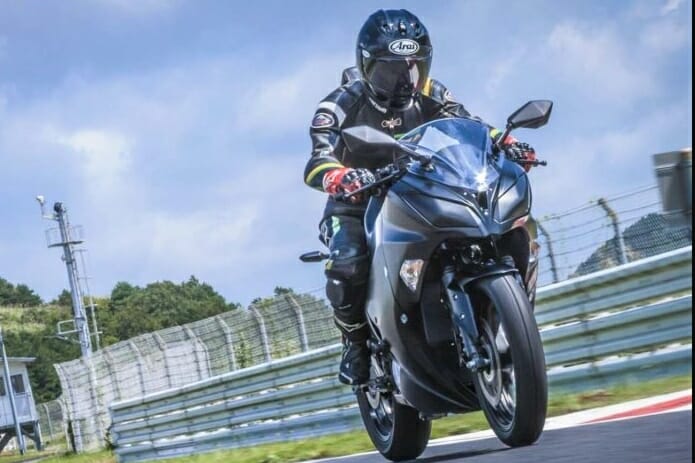Kawasaki revealed a lot of information during its recently held business policy briefing and a major chunk of the discussion revolved around the electrification of its portfolio. The shift towards electric mobility is increasing its pace with each passing day with more and more manufacturers announcing their road map towards achieving complete electrification. Kawasaki too has announced that it is gearing up to introduce at least 10 battery electric vehicles (BEVs) and hybrids (combined) by 2025.
Other announcements
Moreover, the company has also announced that it is planning to go all-electric with all major models for developed countries by 2035. Kawasaki has also announced that it is working hard towards introducing 16 new models per year by 2025 and this number also includes EVs and hybrids.

EV based on Ninja 300
The idea of an electric sportsbike from Kawasaki based on the Ninja 300 has been floating around for a very long time now. Kawasaki too, has constantly teased us with frequently released teasers. The company also released a set of videos showing the development of this EV. The video showcased the manual transmission of this Ninja 300 based EV where Kawasaki is boasting by saying ‘Shifting your impression of EV bikes’. The whole video package began with Kawasaki stated to be “developing the high charged thrills of tomorrow”. The video features a fully-faired prototype, which features a conventional gearbox and the bike has been developed according to Kawasaki’s ‘RIDEOLOGY’ philosophy, which focuses on the machine being fun to control, exciting and reflects the bikemaker’s passion to build desirable motorcycles. Throughout the development phase, Kawasaki has been thoroughly studying and patenting several features, which range from chassis geometry and packaging to thumb-brake activated energy recovery systems and transmissions.
The prototype is equipped with a DC fast charger developed in Japan and it is capable of replenishing back to 100 percent in just half an hour. It bears stark resemblance with the regular Ninja 300 and share most of the mechanical bits like the suspension system, braking unit and even the wheels. It uses a trellis frame though, as opposed to the diamond type frame to accommodate a big battery pack and an electric motor. In place of the six-speed transmission you could find in a regular Ninja, the electric version uses a four-speed unit.
